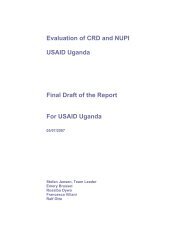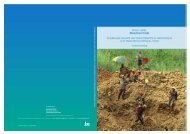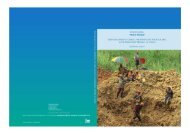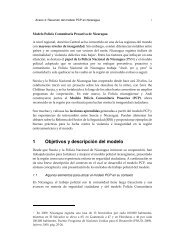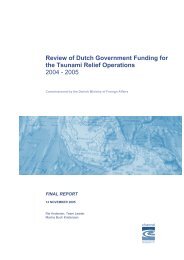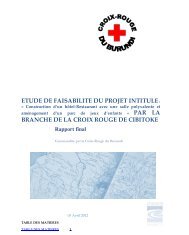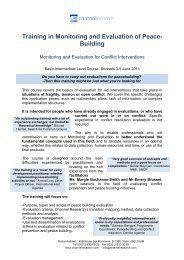A ripple in development? - Channel Research
A ripple in development? - Channel Research
A ripple in development? - Channel Research
Create successful ePaper yourself
Turn your PDF publications into a flip-book with our unique Google optimized e-Paper software.
to the status quo ante, have limited speed of progress <strong>in</strong> terms of enhanc<strong>in</strong>g<br />
people’s participation.<br />
A yet to be published study of French government loans 36 describes<br />
the unusual complexity of identify<strong>in</strong>g the priorities of national partners<br />
<strong>in</strong> the context of such a large disaster, us<strong>in</strong>g standard operat<strong>in</strong>g procedures.<br />
It also highlighted the blurred nature of areas of possible complementarity<br />
with other donors. The EC evaluation 37 of the MDF shows<br />
that a significant proportion of the projects funded show less than satisfactory<br />
performance, due to poor design.<br />
For humanitarian agencies on the other hand the “need for speed”<br />
and pressure to respond, the pressure to disburse, and pressure to deliver<br />
and phase out, accentuate the risk of plans be<strong>in</strong>g drafted hastily, and on<br />
the basis of the planners’ perception of the victims’ immediate needs,<br />
rather than of needs expressed by the populations themselves, with<br />
<strong>in</strong>sufficient attention attached to participation and <strong>in</strong>volvement.<br />
While it is difficult to strike a correct balance, time pressures generally<br />
acted aga<strong>in</strong>st participation and <strong>in</strong>formation processes <strong>in</strong> the first<br />
phases of the response 38 . Emphasis on <strong>in</strong>frastructure and specifically<br />
hous<strong>in</strong>g due to exist<strong>in</strong>g needs, coupled with public pressure, state priorities,<br />
visibility considerations and humanitarian agency and donor<br />
timeframes, dictated that relatively less focus was placed on social issues,<br />
capacity issues, and <strong>in</strong> many <strong>in</strong>stances local participation.<br />
2.6 Conclusion<br />
The constra<strong>in</strong>ts and the positive forces that affected the State’s, Civil<br />
Society’s and the private sector’s roles <strong>in</strong> help<strong>in</strong>g achieve the LRRD<br />
goals were:<br />
(1) pre-exist<strong>in</strong>g conditions before the tsunami, particularly conflict and<br />
the fact that the areas were not considered priority <strong>development</strong><br />
areas,<br />
(2) the extent of devastation and limited prior <strong>in</strong>stitutional capacity <strong>in</strong><br />
the areas,<br />
(3) the shift<strong>in</strong>g level of legitimacy,<br />
(4) the variety of systems <strong>in</strong> place,<br />
(5) the nature of the aid provided, be<strong>in</strong>g more supply-driven rather<br />
than demand or needs-driven, and<br />
(6) the artificial separation of the newly created coord<strong>in</strong>ation mechanisms<br />
and bodies from ma<strong>in</strong>stream <strong>development</strong> plann<strong>in</strong>g.<br />
36<br />
Evaluation of Agence Française de Développement Post-Disaster Programme, <strong>Channel</strong> <strong>Research</strong><br />
2009<br />
37<br />
Mid-Term Evaluation of the Multi-Donor Fund for Aceh and Nias, Particip and <strong>Channel</strong> <strong>Research</strong> for<br />
the EC, 2009.<br />
38<br />
TEC Synthesis Study, 2006.<br />
47




